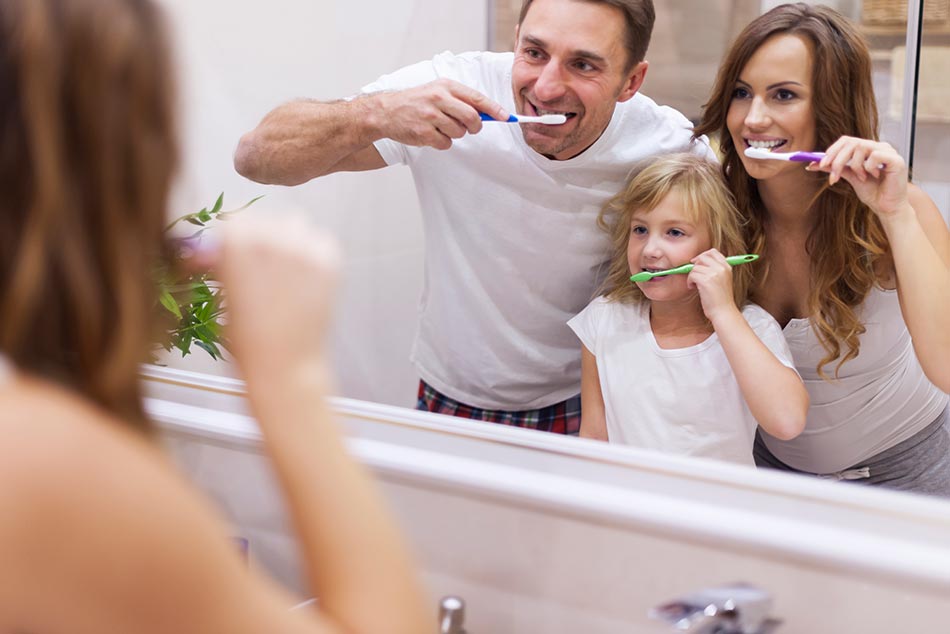Proper brushing takes at least two minutes — that’s right, 120 seconds! Most adults do not come close to brushing that long. To get a feel for the time involved, try using a stopwatch. To properly brush your teeth, use short, gentle strokes, paying extra attention to the gumline, hard-to-reach back teeth and areas around fillings, crowns or other restoration. Concentrate on thoroughly cleaning each section as follows:
Tilt the brush at a 45° angle against the gumline and sweep or roll the brush away from the gumline

Gently brush the outside, inside and chewing surface of each tooth using short back-and-forth strokes.

Gently brush your tongue to remove bacteria and freshen breath

- Clean the outer surfaces of your upper teeth, then your lower teeth
- Clean the inner surfaces of your upper teeth, then your lower teeth
- Clean the chewing surfaces
- For fresher breath, be sure to brush your tongue, too






